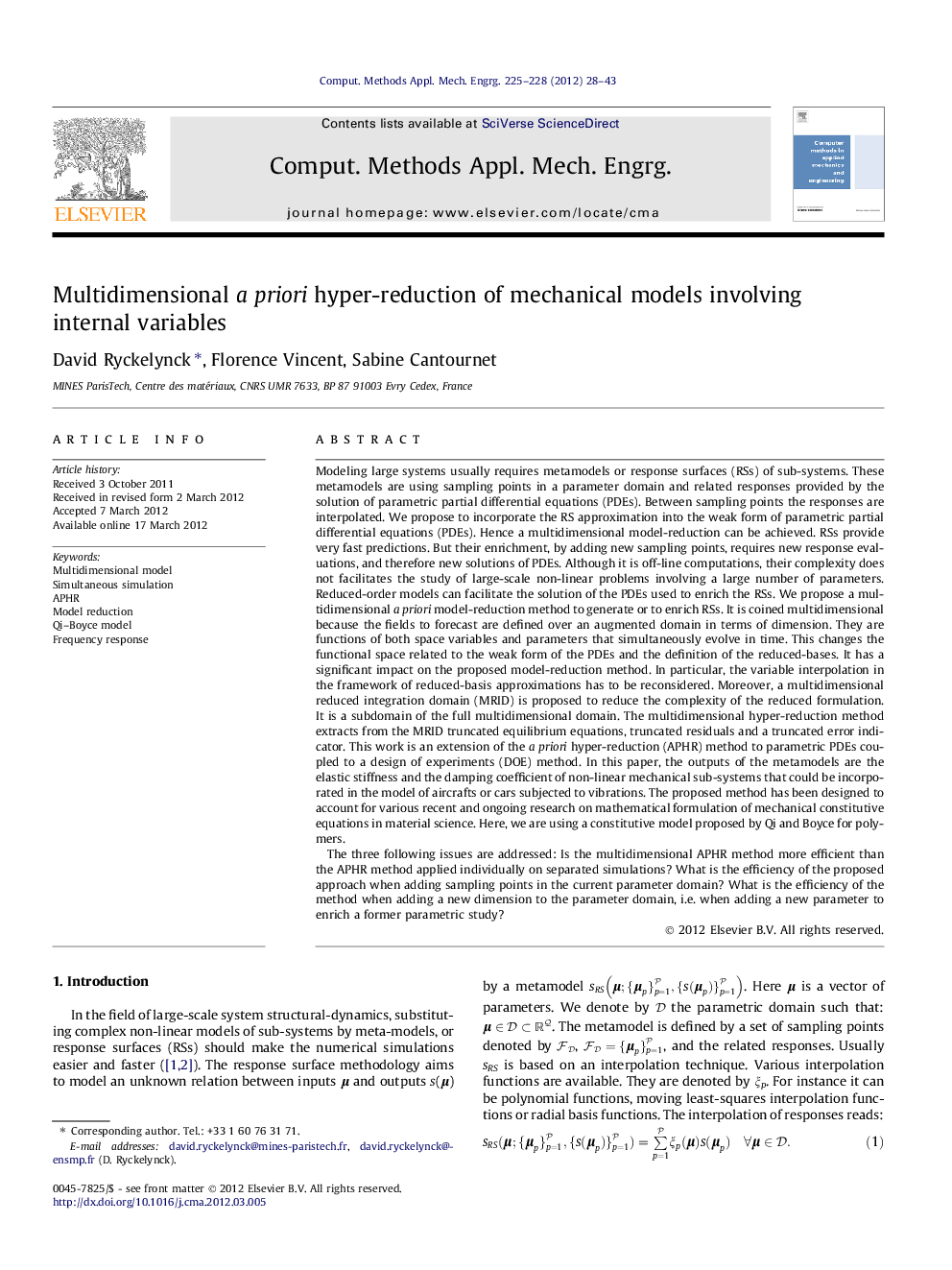| کد مقاله | کد نشریه | سال انتشار | مقاله انگلیسی | نسخه تمام متن |
|---|---|---|---|---|
| 498355 | 862989 | 2012 | 16 صفحه PDF | دانلود رایگان |

Modeling large systems usually requires metamodels or response surfaces (RSs) of sub-systems. These metamodels are using sampling points in a parameter domain and related responses provided by the solution of parametric partial differential equations (PDEs). Between sampling points the responses are interpolated. We propose to incorporate the RS approximation into the weak form of parametric partial differential equations (PDEs). Hence a multidimensional model-reduction can be achieved. RSs provide very fast predictions. But their enrichment, by adding new sampling points, requires new response evaluations, and therefore new solutions of PDEs. Although it is off-line computations, their complexity does not facilitates the study of large-scale non-linear problems involving a large number of parameters. Reduced-order models can facilitate the solution of the PDEs used to enrich the RSs. We propose a multidimensional a priori model-reduction method to generate or to enrich RSs. It is coined multidimensional because the fields to forecast are defined over an augmented domain in terms of dimension. They are functions of both space variables and parameters that simultaneously evolve in time. This changes the functional space related to the weak form of the PDEs and the definition of the reduced-bases. It has a significant impact on the proposed model-reduction method. In particular, the variable interpolation in the framework of reduced-basis approximations has to be reconsidered. Moreover, a multidimensional reduced integration domain (MRID) is proposed to reduce the complexity of the reduced formulation. It is a subdomain of the full multidimensional domain. The multidimensional hyper-reduction method extracts from the MRID truncated equilibrium equations, truncated residuals and a truncated error indicator. This work is an extension of the a priori hyper-reduction (APHR) method to parametric PDEs coupled to a design of experiments (DOE) method. In this paper, the outputs of the metamodels are the elastic stiffness and the damping coefficient of non-linear mechanical sub-systems that could be incorporated in the model of aircrafts or cars subjected to vibrations. The proposed method has been designed to account for various recent and ongoing research on mathematical formulation of mechanical constitutive equations in material science. Here, we are using a constitutive model proposed by Qi and Boyce for polymers.The three following issues are addressed: Is the multidimensional APHR method more efficient than the APHR method applied individually on separated simulations? What is the efficiency of the proposed approach when adding sampling points in the current parameter domain? What is the efficiency of the method when adding a new dimension to the parameter domain, i.e. when adding a new parameter to enrich a former parametric study?
Journal: Computer Methods in Applied Mechanics and Engineering - Volumes 225–228, 15 June 2012, Pages 28–43